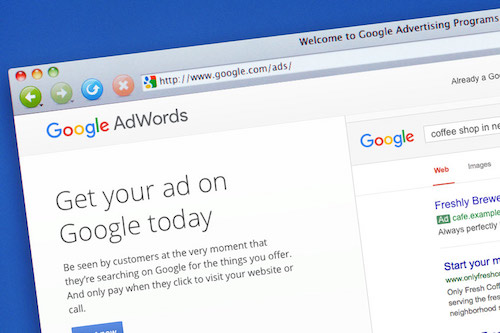This guide covers the three most important types of paid digital advertising to help you decide which is right for your marketing needs:
PPC (Pay-Per-Click)
What PPC is
PPC ads are a type of advertising in which advertisers pay a fee only when someone clicks on their ads. Search engine advertising, like Google AdWords, is one of the most popular types of PPC ads.
When to use PPC
If your practice doesn’t rank highly in Google search engine results, PPC ads can help close the gap.
Organic search engine optimization takes time. PPC ads provide immediate results. PPC ads like Google AdWords also provide a plethora of digital data about the ad’s performance and keyword success.
You can use this feedback to adjust your ad’s message, the time of day the ad is shown, and narrow down the geographic region. For example, let’s say your urgent care practice wants to reach more mothers searching for urgent care for their children.
Many times, our Pay Per Click company uses feedback from the campaign to narrow down which keyword phrases are most popular with the target audience (e.g., “urgent care children” versus “urgent care “pediatrician”) and to adjust the campaign accordingly for maximum ROI.
Retargeting
What Retargeting is
Retargeting is a type of advertising that utilizes “cookie-based technology” to track target customers who click on one of your paid ads or visits a specific page on your website.
You place a piece of code on your website that drops an anonymous browser cookie. Later, when your visitor browses other websites, the cookie will tell your retargeting provider to show an ad for your healthcare practice.
Retargeting is highly effective since it focuses your advertising spend on potential patients who have already demonstrated an interest in your practice.
When to use Retargeting
For most websites, only 2 percent of visitors convert into customers, clients or patients; retargeting allows you to stay in touch with the other 98 percent. Retargeting is great for advertising campaigns with KPIs like new patient online appointments or sign-ups for a blood drive event.
If a potential patient or donor visits the sign-up page but fails to submit the form, you can use retargeting to continue advertising to the prospective patient in an effort to bring him or her back to your website and complete the sign-up form
Social Network Advertising
What Social Network Advertising is
With Facebook’s estimated social media advertising predicted to top $11 billion in revenue by 2017, according to the Marketing Tech Blog, social network advertising is big business. That’s in part because social network advertising allows businesses, including healthcare providers, to find new potential clients, customers, and patients by using social network user’s own information to identify possible interest.
Rather than relying on keyword searches to identify user intent, social media advertising can build your brand awareness with prospective patients before they even begin to search.
When to use Social Network Advertising
While paid search (e.g., PPC ads) is great for driving visitors to your website based on search intent, what if no one ever searches for your search terms, or if the most effective search terms are too expensive for your practice to bid upon?
What if you just want to build brand awareness around your healthcare practice? In both cases, social network advertising is the best option since it allows for advanced targeting, provides reliable conversion tracking, and works equally great on mobile devices and desktops.
You can target prospective patients by interest, behavior, connections, and “lookalikes” (reaching new people who have the same profile characteristics as people who already care about your business).




